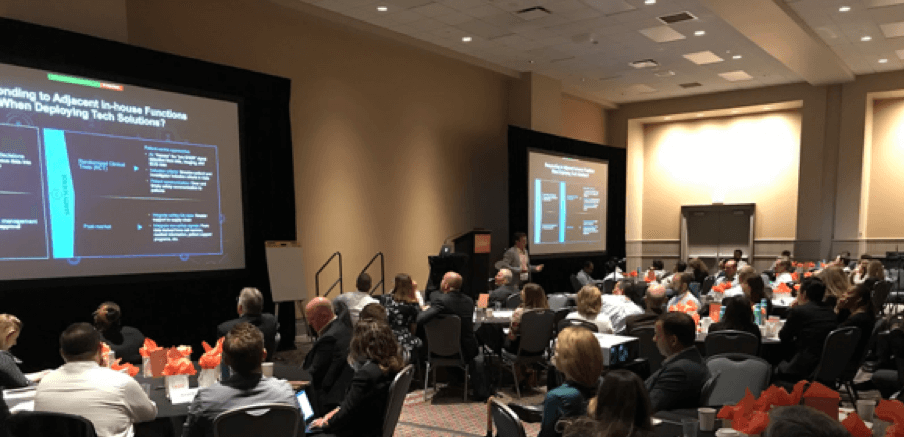Blog
Disrupting the Safety Industry at the Veeva Safety Forum
Oct 01, 2019 | jing.to@veeva.com
Oct 01, 2019 | jing.to@veeva.com
Over 100 safety leaders from more than 60 companies joined a half-day event in Philadelphia to learn about the challenges in safety and how technology is transforming the industry.
The vast majority of attendees agreed the industry is ripe for disruption. Exponential growth in data with social media, wearables, electronic medical health records, and other sources is making it challenging for pharmacovigilance (PV) teams to review and process all the information – whether it is for adverse event intake or critical decision-making that directly impacts patients. An exorbitant amount of time and resources are spent upgrading and maintaining systems, and companies struggle to keep up with changing regulatory and business demands. These challenges have been a reality for PV organizations for some time, however, “what is different now is that the technology to address these challenges is now real,” said Rich Wolf, executive director, pharmacovigilance operations, global clinical safety and pharmacovigilance, CSL Behring.

Ed Tucker, former COO of Acerta Pharma, discussed opportunities for technology to improve safety science and safety operations across the product lifecycle – enabling PV teams to make better and faster decisions. Safety operations, for example, can be improved with automation through natural language processing, standardization of electronic health record (EHR) feeds, and real-time operational metrics. For safety science, investments in better safety biomarkers can enable predictive safety, integration of disparate safety data sources for enhanced signal validation, and data visualization for easily viewing chronology for each patient. Technology can also streamline communication and data flow with adjacent functions to provide better insights. With growing data volume, automation can help PV teams efficiently scale, freeing them from just focusing on compliance and supporting improved safety decision-making. Going forward, with the enablement of new technology, regulators will make the move from asking ‘when were you aware of this signal’ to ‘when should you have been aware of this signal.’
Once companies have a solid foundation – easily meeting compliance and having data for making better safety decisions, what is next for pharmacovigilance? Seth Levine, managing director, Deloitte, explored how safety needs to evolve to better understand both risks and benefits. There is pressure for the industry to move to an outcomes-based model. Knowing how a treatment will affect a specific person based on their existing medications and conditions will improve a patient’s quality of life as well as minimize payment for medicines that have little or no impact. However, who will take responsibility to collect, aggregate, and analyze the data to support it? Is it PV? If the pharma company does not take ownership to figure out safety for a patient, someone else will do it. And, if that external party can analyze the data and start providing value to payers and patients on the impact as well as how to mitigate side effects, then they can potentially start influencing formularies. PV teams need to be prepared and investments in systems and organizations need to map into the overall direction of the industry.
As we look towards the future, a panel of 5 safety executives discussed their main challenges as well as where the greatest opportunities lie ahead. The question and answer part of the discussion quickly focused on AI. There is a lot of excitement in this area, largely driven by data growth outpacing a company’s ability to efficiently manage it.
The forum finished with a demonstration of Vault Safety and Vault Safety.AI as well as highlights of the respective product roadmaps. Attendees showed strong interest in Vault Safety and Vault Safety.AI with many questions and comments during the Q&A. With built-in integrations to other legacy safety databases, PV teams can immediately take advantage of Vault Safety.AI. Vault Safety will enable operation teams to keep up-to-date with regulations and other changes, while minimizing the burdens of upgrades. The demo also showed how the Vault Safety Suite seamlessly supports safety end-to-end, on one platform, breaking down many of the silos that currently existing in the PV system landscape. To keep informed of our product roadmap, please join our Vault Safety 19R3 release webinar on Wednesday, November 13 from 11 am – 12 pm ET.
Visit our Resource Centre to get the latest insights on innovative approaches to digitization from leading pharma and biotech companies.
